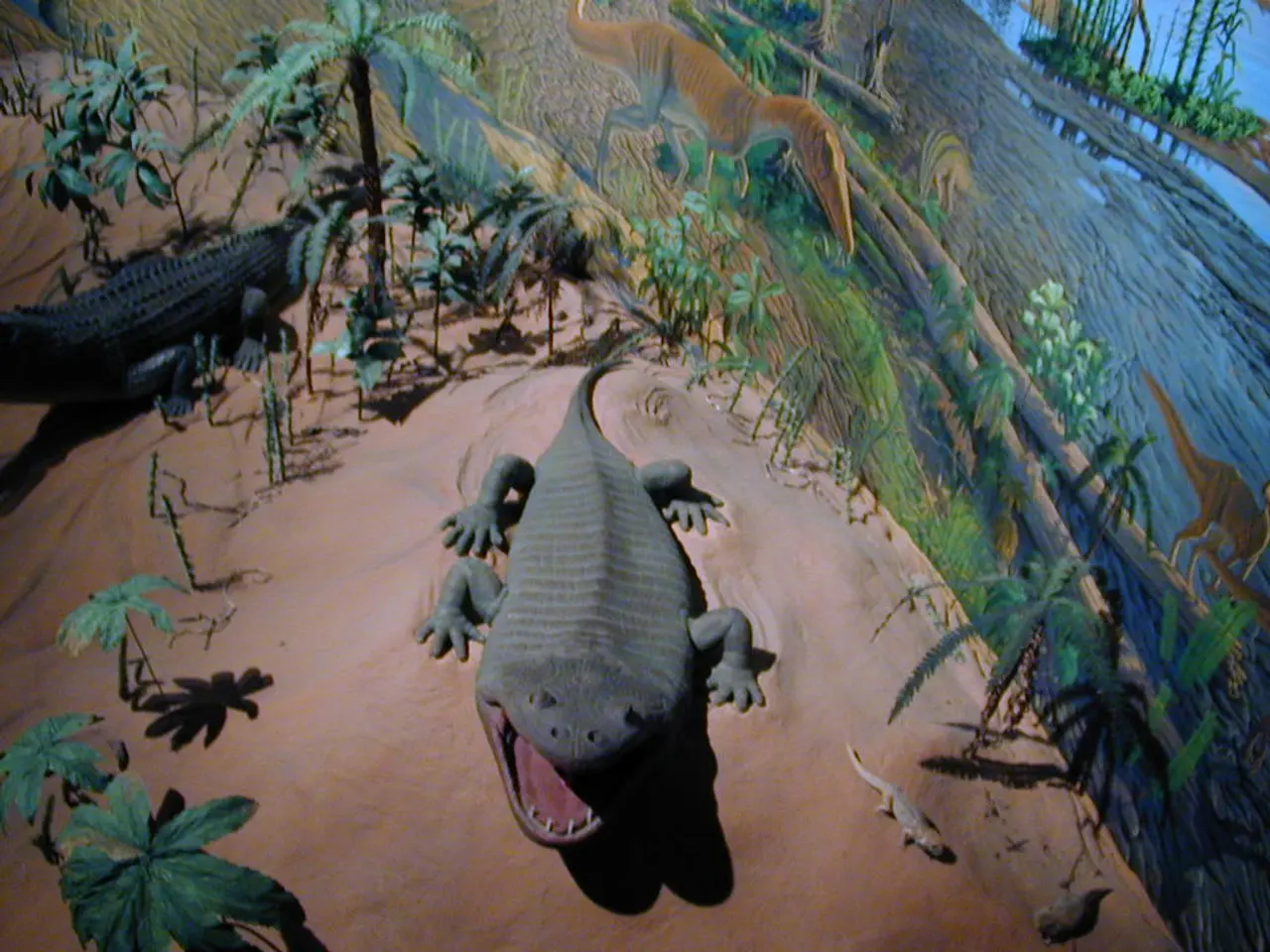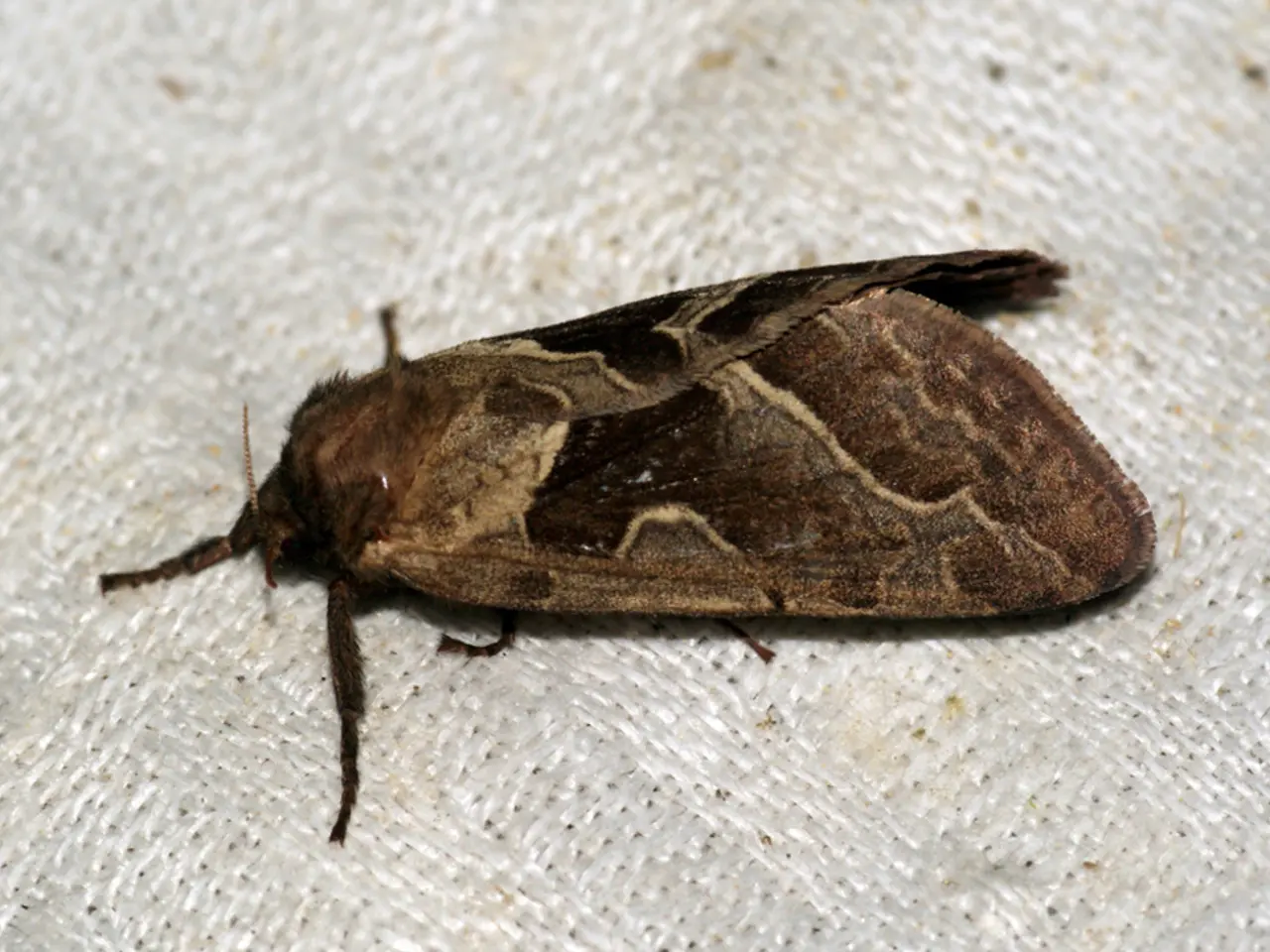Ancient Tropical Britain: Discovered Fossils of Palm Trees and Crocodiles in Kent
In the picturesque county of Kent, the discovery of fossilized palm trees and crocodiles has stirred a sense of awe and wonder, inviting us to embrace the rich tapestry of Earth's history and the dynamic nature of our planet. This intriguing find offers a captivating window into the Eocene Epoch, a time of significant climatic change on Earth that spanned from approximately 56 to 34 million years ago.
During the Eocene, the Earth experienced a series of dramatic climatic shifts. The Paleocene-Eocene Thermal Maximum (PETM), which occurred around 56 million years ago, marked a period of intense global warming with temperatures rising by 5-8 °C[1]. This was followed by the Early Eocene Climatic Optimum (EECO), characterized by prolonged warmth from about 53 to 49 million years ago[2]. Britain during this period was generally warm and humid, with no evidence of ice cover.
Fossil discoveries in Britain, particularly within the London Clay Formation, provide valuable evidence of the Eocene climate. The rich array of fossils found in this geological formation, including those of tropical plants and animals, indicate a climate much warmer than it is today, supporting the presence of tropical or subtropical ecosystems.
Notable fossil discoveries include the fossils of palm trees, warm-water shells and corals, and early mammals and reptiles. The presence of these fossils collectively paints a picture of Britain during the Eocene as a warm and biodiverse region, significantly different from its current temperate climate.
The story of tropical Kent is not just a tale of the past; it's a lesson for the present and a guide for the future. By studying these fossils, scientists can piece together the puzzle of Earth's climatic history, gaining insights into natural climate variability and the potential impacts of human-induced climate change.
Moreover, the discovery of these fossils challenges us to think critically about our relationship with the environment and the steps we must take to protect our planet for future generations. The resilience of life, as evidenced by the thriving ecosystems of the Eocene, serves as a reminder of the Earth's capacity for transformation.
References: [1] Zachos, J. C., et al. (2001). Trends, rhythms, and aberrations in Neogene climate: A review. Reviews of Geophysics, 39(2), 101-136. [2] Raymo, M. E., et al. (2006). A palaeoclimate perspective on recent global change. Nature, 440(7086), 161-167. [3] Benton, M. J. (2005). The Eocene-Oligocene boundary: A critical interval in Earth history. Annual Review of Earth and Planetary Sciences, 33, 331-361. [4] Retallack, G. J. (2001). The Paleocene-Eocene Thermal Maximum: a review of the evidence and implications. Climate Change, 51(1-2), 27-54.
- The discovery of palm trees and crocodile fossils in Kent, during the Eocene Epoch, provides a fascinating window into the Earth's rich history, a time marked by significant climate change.
- This era saw drastic shifts in energy consumption, as witnessed by the Paleocene-Eocene Thermal Maximum (PETM), an event that triggered intense global warming around 56 million years ago.
- The altered climate led to the emergence of diverse ecosystems, as indicated by the biodiversity recorded in the London Clay Formation, featuring tropical plants, animals, and even early mammals and reptiles.
- As we delve deeper into environmental-science, studying these fossil remains can offer valuable insights into the evolution of climatic conditions and the potential impacts of human-induced climate change on health-and-wellness, therapies-and-treatments, and the space-and-astronomy sector.
- By reflecting on the resilience and evolution demonstrated by the Eocene's vibrant ecosystems, we are compelled to reevaluate our relationship with the environment and actively take steps to safeguard ecosystems for future generations.




